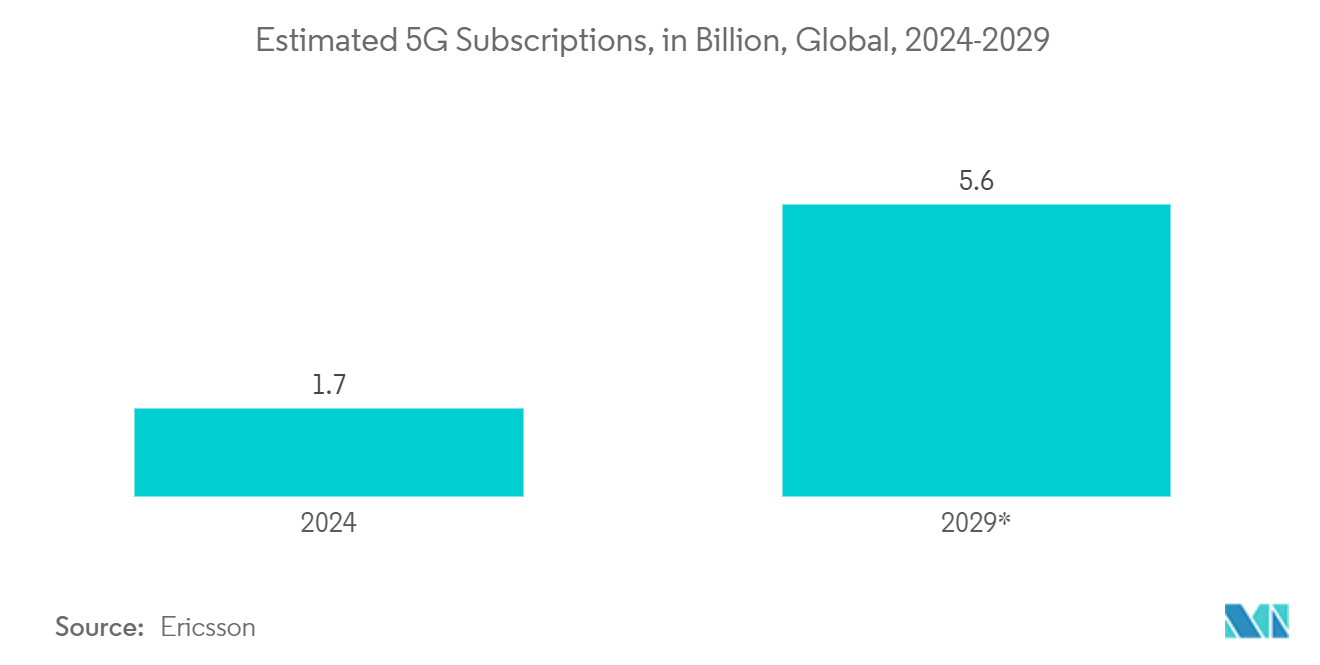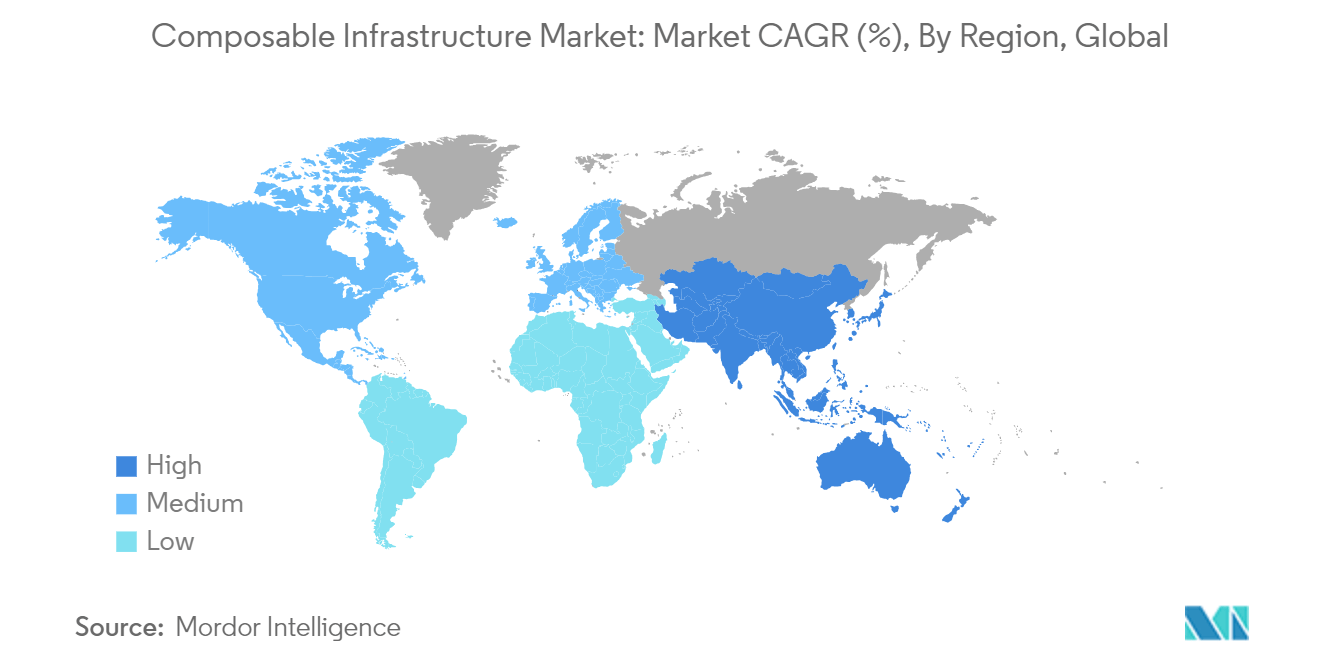Market Trends of Composable Infrastructure Industry
IT and Telecom Industry to be the Largest End User
- IT and telecom enterprises are willing to accelerate their apps, data, and innovation in the current scenario. They need to manage conventional bare-metal and virtualization applications more efficiently while supporting the containerized applications with software-driven automation and a fluid pool of resources that may flexibly custom fit the specific requirements.
- The telecommunications industry now regards CI/CD (Continuous Integration/Continuous Deployment, generally referred to as Composable Infrastructure) as a critical step in a service provider's fifth-generation (5G) core deployment journey. The essence of composable functional capabilities lies in creating modular and interoperable solutions that adapt to the evolving needs of businesses in the 5G ecosystem. Recently, Liqid showcased VMware's hyperconverged infrastructure (HCI) software running on top of Liqid's disaggregated composable infrastructure for 5G.
- 5G URLLC (Ultra-Reliable and Low-Latency Communications) started with 3GPP Release 15, which met the requirements for implementing long-range PCIe and enabled the design of composable edge cloud storage over 5G. They use COTS hardware comprising AMD/Xilinx Ultrascale+MPSoC and 5G modems to connect a standard NVMe SSD with a standard CPU running Linux and the NVMe protocol. Overall, it is possible to tunnel PCIe over 5G, although it is not entirely reliable due to the TCP tail latency. While the latency and bandwidth pose a significant bottleneck, improvements with the upcoming releases of 5G, such as URLLC, should alleviate these issues.
- The telco industry has been built on top of back-office systems like revenue assurance and billing and customer data programs. A fragmented commerce landscape is usually commonplace, including a POS platform for brick-and-mortar stores and a stand-alone e-commerce solution. Also, many telcos rely on separate customer service platforms to support customer inquiries that reach their contact centers. Usually, this assortment of solutions fails to sync and share information, leading to data silos and disjointed customer journeys.
- According to Ericsson, by 2028, 5G is anticipated to become the leading mobile access technology by subscription. Projections indicate that global 5G subscriptions will nearly reach 5.6 billion by 2029, accounting for 60% of all mobile subscriptions. The telecommunications sector now considers CI/CD essential in the deployment journey of a service provider's fifth-generation (5G) core. Transitioning to cloud-native 5GC introduces new operational and management challenges for CSPs, necessitating intentional operational transformation.
- These challenges include more frequent updates to test infrastructure and test cases, incremental delivery and deployment that also require incremental security measures, a cultural shift toward the DevSecOps model to integrate security into the rapid-release cycles typical of modern CI/CD processes, and the implementation of cloud-native technology, microservices, and service-based architectures, which drive increasingly higher levels of automation.

North America Holds Largest Market Share
- The North American region dominates the composable infrastructure market, with the United States occupying a significant market share. The major reason for the region's dominance is the presence of leading composable infrastructure solution providers, such as Cisco, Juniper Networks, Liqid Inc., Nutanix Inc., and Hewlett Packard Enterprise. These players focus on partnerships, mergers and acquisitions, and innovative solutions to stay in the regional and global competitive landscapes.
- The North American region plays a crucial role in enhancing the growth of the software-defined network service market. This is mainly because of factors like the implementation and acceptance of advanced technology, developments in network automation, and the surge in the number of cloud-based services. Over the next five years, most IT teams will increasingly adopt NaaS (Network-as-a-service) as suppliers deliver hybrid offerings that include software, cloud intelligence, and the option for managing on-premises hardware.
- The market is witnessing potential product innovations and capital investments, which suggest the increasing acceptance and demand for such solutions, especially in the field of supercomputers, HPCs, and AI and ML computations.
- For instance, in October 2023, Cerio announced an advanced development in composable infrastructure, advancing PCIe systems beyond a single domain and introducing new "scale economics" for AI and cloud data centers. The innovative Cerio platform enables data centers to manage their infrastructure programmatically, providing unprecedented operational flexibility to handle system capacity, upgrades, and repairs. Leveraging its extensive experience in distributed architectures and multipath fabrics, Cerio has designed highly robust and heterogeneous systems. Cerio is collaborating with early-access customers in North America, Europe, and Asia-Pacific to implement critical use cases, including scalable GPU capacity and storage agility.


